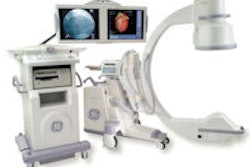Dear Digital X-Ray Insider,
Quality control of digital x-ray is in the news again, this time with respect to computed radiography (CR) studies rejected for image quality concerns.
U.S. researchers tracked CR rejection rates from a pair of hospitals, with the goal of discovering whether some types of studies were rejected more than others, and whether radiologic technologist education could help reduce retake rates.
The authors discovered a number of surprising phenomena. As expected, retake rates for studies of some anatomical regions were higher than for others. But they also found much lower retake rates for portable chest studies compared to those performed within the radiology department -- the opposite of what you might expect based on experiences in analog film-screen radiography.
What's more, the researchers found that technologists were rejecting some CR studies that could have been easily corrected through image postprocessing. Get more details on the study -- and find out how you can train your radiologic technologists to perform more accurate quality control -- in our Insider Exclusive article, available now only to Digital X-Ray Insiders by clicking here.
In other news in the community, multimodality vendor GE Healthcare recently announced that it has received the go-ahead from the U.S. Food and Drug Administration (FDA) to resume manufacturing of surgical C-arms. The Chalfont St. Giles, U.K.-based company had suspended production in 2006 as part of a consent decree with the FDA, which was concerned about quality control issues at the vendor's manufacturing plants. Learn more by clicking here.
In other clinical news, European researchers report on their experiences with dual-energy subtraction digital radiography (DR). Their hope was that dual-energy subtraction would improve the performance of DR in detecting lung nodules, but clinical results indicated that the technique had about the same performance as conventional DR. Find out why by clicking here.
Learn about a new market research report projecting more growth for the DR industry, while another report says there's still life in the market for x-ray film, despite the adoption of digital technologies like DR, CR, and PACS. Meanwhile, learn why some industry observers are up in arms over a controversial Web site that offers clinicians and patients estimates on radiation dose from imaging procedures.
If you have any tips or ideas on topics you'd like to see covered in the Digital X-Ray Community, drop me a line at [email protected].



















